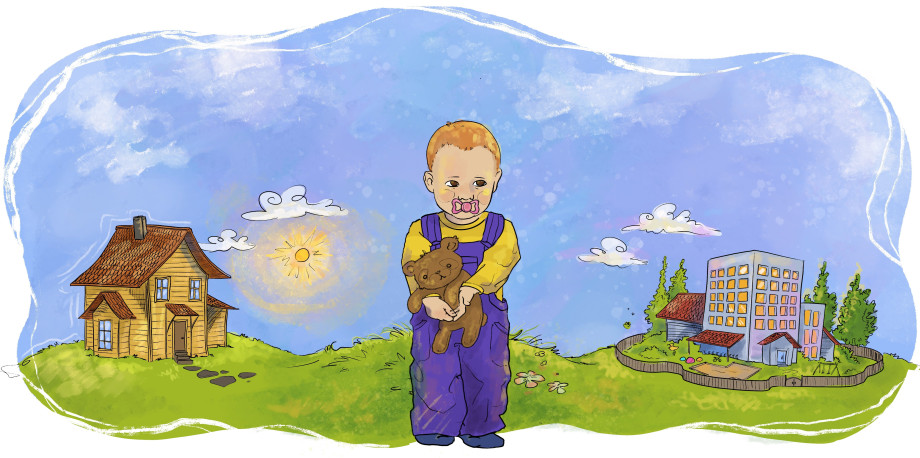Attending childcare for the first time can be extra challenging for shy children. To support shy children's well-being as best as possible, the staff needs to recognize children’s needs in different situations. A good collaboration between parents and childcare staff is extra important when there are shy children in the group.
Shy children can show wariness, anxiety, and reticence in new situations like starting in childcare. These children have an increased risk for missing out in social interactions, especially in an environment such as childcare, where there is a large focus on play and friendship. A lot is already done to support children's needs when they start in childcare, but shy children often need a bit more help to have a good start in childcare.
This resource from FILIORUM - Centre for Research in Early Education and Care presents results from the research article Examining the longitudinal association between toddlers’ early shyness and their well-being during their first year in Norwegian early childhood education and care by Karin van Trijp and colleagues (2023).
This video presents challenges shy children may face in childcare, how shy children can express well-being and what childcare staff can do to support shy children during their first year in childcare. Childcare staff who have knowledge of children’s temperament and needs can create a good environment where shy children’s well-being is also supported.
Aim: By using this resource, teachers and childcare staff will gain knowledge about the challenges shy children may face throughout their first year in childcare and how to promote the well-being of shy children. Useful for: Early childhood in-service teachers and staff, early childhood preservice teachers (students), and university teachers in early childhood teacher education. Recommended time use: Ca. 45-60 min. Tips for using this resource: 1. Watch the video. 2. Discuss the reflection questions, preferably in groups. 3. Carry out the activity together with colleagues (se Activity). 4. Share experiences with each other at the next staff meeting or lecture.

Questions for reflection
Reflect individually and in groups:
- What new thoughts about children’s well-being and the role of being shy have you gained after watching this video?
- How are the children expressing their well-being in your group? Try to reflect on children who you think are thriving and children who thrive less.
- How are the children expressing their shyness in your group? Try to reflect on children who you think are very shy and children who are not shy.
- In which situations in childcare is it easier for shy children to thrive and when is it difficult? What can you do to support children who are more shy?
______
Printable version of the resource
Reflect on what you do to support children’s well-being and especially for the shy children. Create a concrete goal for how you can support shy children and create a comfortable environment for these children. Share your experiences with your colleagues in the next staff meeting or lecture.
Early childhood research from FILIORUM
This resource from FILIORUM - Centre for Research in Early Education and Care draws on the results from the following research article:
Van Trijp, C. P. J., Lekhal, R., Drugli M. B., Rydland, V., & Solheim Buøen, E. (2023). Examining the longitudinal association between toddlers’ early shyness and their well-being during their first year in Norwegian early childhood education and care. Early Child Development and Care.
This article is part of Karin van Trijps' doctoral work Toddlers’ Social-Emotional Well-Being in Early Childhood Education and Care: The Role of Child Temperament and Process Quality (2023, University of Oslo) and the research project Thrive by 3.
Aim
Gain knowledge of how shy children thrive during their first year in childcare
Research question
- Is there an association between toddlers’ early shyness at the start of childcare and their well-being by the end of their first year in childcare?
Methods
A quantitative study using two questionnaires to measure children’s shyness at the start (answered by a parent) and well-being by the end of the first year in childcare (answered by the staff member who knew the child best).
Data material
The study used quantitative data from the Thrive by 3 project on children's well-being measured with a questionnaire named Leiden Inventory for the Child’s Well-Being in Dayccare (LICW-D; De Schipper et al., 2004) and a questionnaire that measures children's shyness, namely Emotionality Activity Sociability Temperament Survey for Children (EAS; Buss & Plomin, 1984).
Key findings
Children who were more shy at the start were thriving less than other children in the group by the end of the first year in childcare. There was no difference between boys and girls.
Thrive by 3 - is a research project to develop and test the effect of a model to raise the quality of interaction in early childhood education and care.

Contributing author
Department of Early Childhood Education
